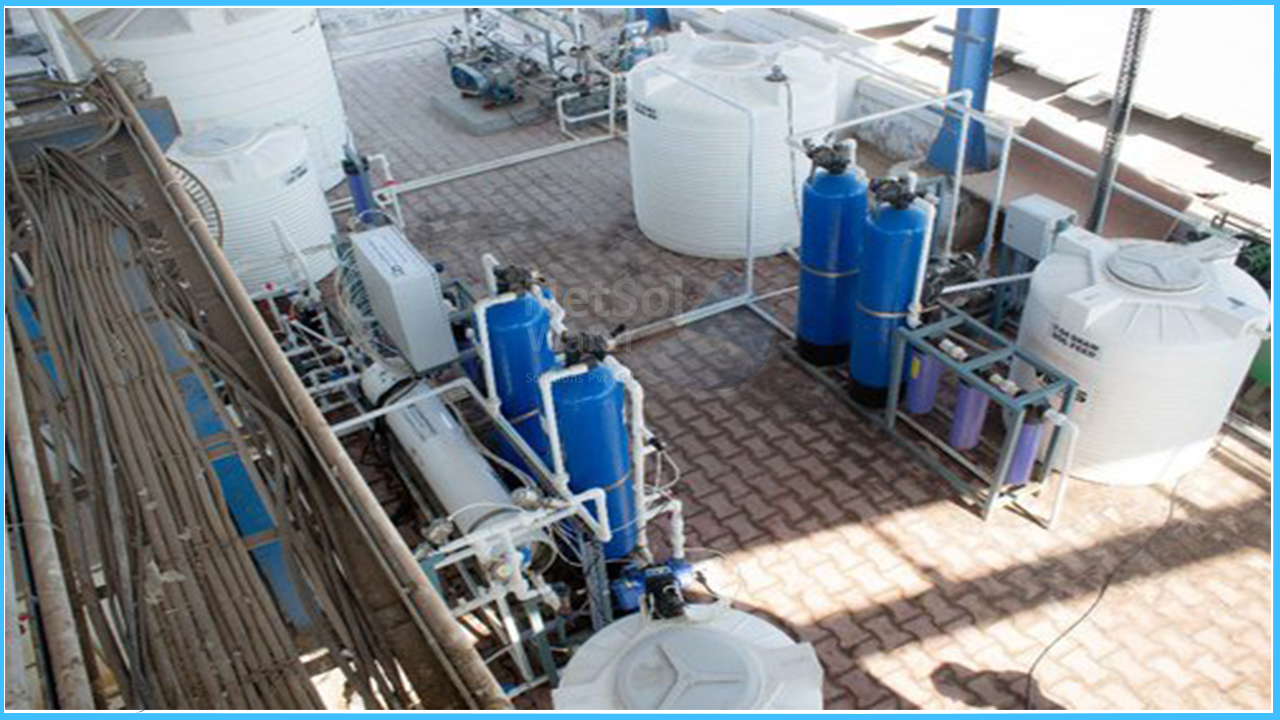Reverse Osmosis (RO) is known to produce very pure water, but RO also produces a large amount of wastewater known as RO brine. If we discharge this salty water into local sewage pipelines, it can cost the treatment cost to go up and sending the wastewater to a treatment plant is not cost efficient.Evaporation is one of the cheapest and most environmental friendly ways to remove brackish or salty water.
Netsol can develop an RO Reject water treatment plant for your specific need. Such a system is designed to be closed and have zero discharge.
PROCESS INVOLVED
Zero Liquid Discharge (ZLD) can be achieved filter press using evaporation method. The RO effluent is kept in a storage tank unless it is ready for treatment. The wastewater is pumped into a heated tank system, where the evaporator evaporates the water. The wastewater now becomes thick. The slurry is pumped to a filter press to collect the solids. The heated tank runs smoothly and remains heated due to the filter press action.After this water isfiltered, it is again sent to evaporation chamber for evaporation.
RO REJECT WATER TREATMENT SYSTEM | OPTIONS AND INSTALLATION
Netsol can manufacture the complete water treatment system. The evaporator and heated tank system can be manufactured with heating system based on gas, electricity or steam. This system design is based on needs of the consumer.
- 1. Holding Tank
It is used to hold RO reject water for further treatment.
- 2. Evaporator
The simplest type of evaporation tank is atmospheric evaporation system which is generally used because of its highest efficiency.
- 3. Filter Press
Filter press is another component of ZLD system. After the RO brine passes through this system, sludge and heated water is returned to the storage tank for further evaporation process and to keep the tank heated.
COMMISSIONING & INSTALLATION
Netsol Water can offer commissioning and installation as an additional option.
- 1. We can offer you complete support during the commissioning of your system.
- 2. We have installers and technical representatives that we can dispatch to your facility to make sure the system is working properly.
- 3. Design and build equipment to your specifications
- 4. Equipment loading, shipping and unloading
- 5. Installing and assembling equipment in your facility
- 6. Plumbing and electrical connections
- 7. Personnel training
- 8. Troubleshooting equipment / installation problems
- 9. All units and systems come complete with phone support. However, if you need someone to come to your facility, we will be happy to make an offer.



